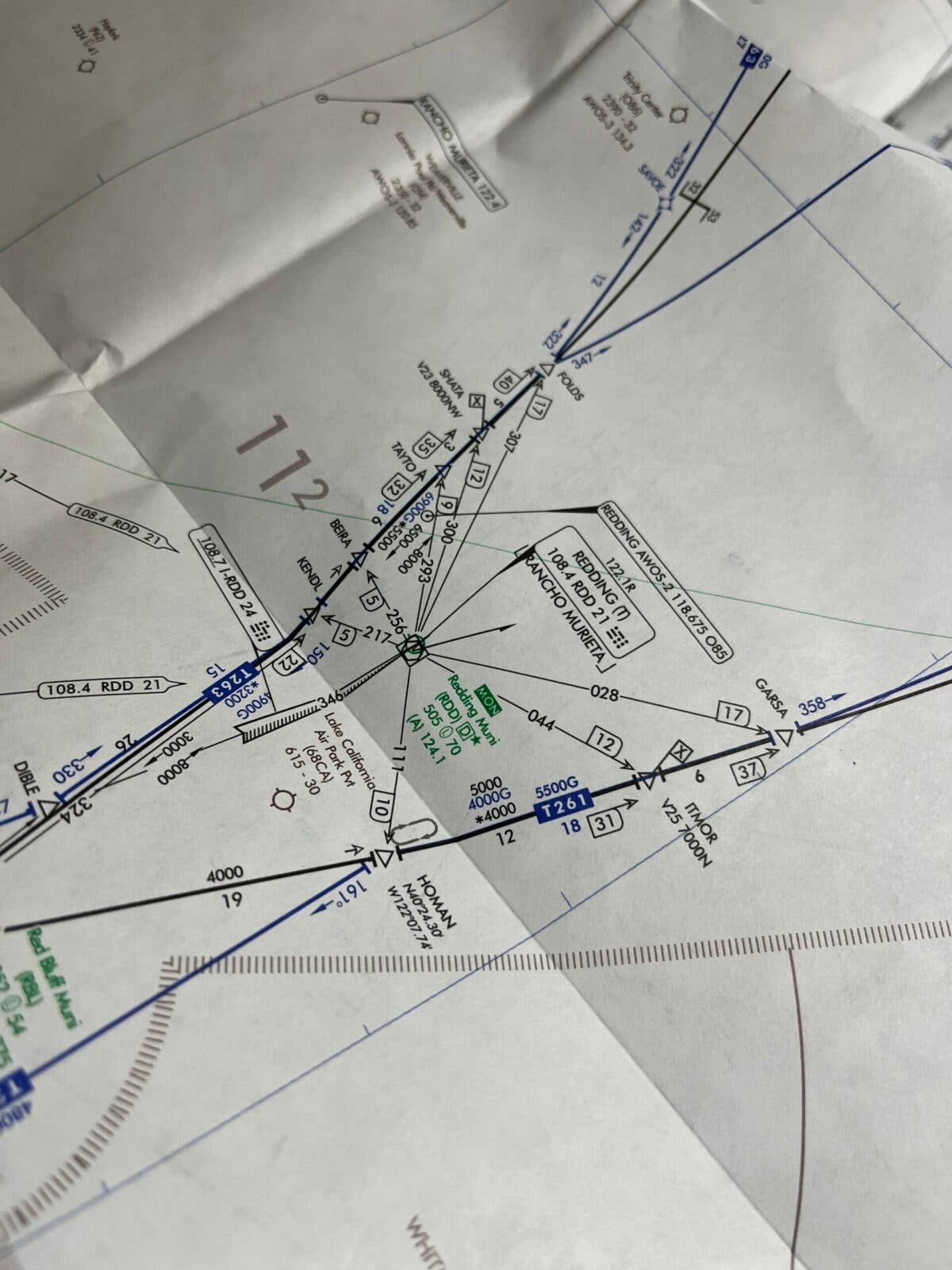How IFR Fixes Get Their Names
The naming convention for IFR fixes sometimes seems like the FAA’s version of Scrabble.

The criteria for an IFR fix name is pretty straight forward: It must contain five letters, and it must be easily pronounceable. [Courtesy: Meg Godlewski]
Have you taken a look at a low IFR enroute chart lately? Specifically, note the five-letter designations for IFR fixes, which are geographic positions determined by reference to navaids or lat/long coordinates. You may find yourself wondering if the people in charge of coming up with the designations are using the tiles from a Scrabble game to name the fixes.
According to the FAA, the designations come from the agency's Aeronautical Information Services (AIS) office located in Silver Springs, Maryland. Their job is to issue five-letter names for radio fixes, waypoints, marker beacons, and compass locators.
If you think that the designations seem random—for example JUYCU, FAVDU, AXQOX, BLAKO—you would be correct, according to the FAA: "The vast majority of five letter fix names are normally assigned on a randomized basis."
There are, however, also fixes that honor sports teams, FLYING learned. This is particularly true of college team mascots, such as COUGS, BEAVS, and DUKKS in the Pacific Northwest.
The FAA’s regional air traffic offices sometimes ask for specific five-letter names for radio fixes and waypoints. The AIS grants them when feasible.
The criteria for an IFR fix name is pretty straightforward: It must contain five letters, and it must be easily pronounceable.
According to the FAA, other fixes honor local landmarks, such as "The RADYR departure route in Las Vegas, and the APPLE arrival route to La Guardia Airport in New York. Near Kansas City, you will find SPICY, BARBQ, and RIBBS. Some sporting names include GOALL, FTBAL, and COACH. Fixes can also be named for people, or given generic names, like LIZZY or JAZMN. Even cartoon characters get in on the fun, like POPYE, MINEE, BUGGZ, and BUNIE."
The FAA publishes guidelines for navaid names. The names selected "should represent a city, town, or prominent geographic landmark that is depicted on a sectional aeronautical chart at or near the site," according to the agency. "If one is neither available nor suitable, a local memorial name may be used. A common, easily understood word should be selected for the navaid name."
The name cannot sound similar to existing navaids or fix location names with the originating air route traffic control center's (ARTCC) area, the adjacent ARTCC area, or within a 300 nm radius from the navaid involved.
Changing a Fix Name
The FAA does not encourage the public to suggest names or changes to names of fixes, and says doing so becomes a workload issue. "Requests are generally made to the local air traffic control facility, which forwards the request to a regional air traffic office or the AIS for further action," the agency said.
A request for a name change needs to be submitted through the FAA’s IFP Gateway. A few requests are handled each year.
After a name change is submitted, the request is assessed to ensure it’s in alignment with the Flight Procedures Management Program, the FAA told FLYING. The FAA then coordinates the change with air traffic control, canceling the old waypoint, establishing the new one, and then revising and updating all procedures the old waypoint was named in.
It takes approximately seven to eight months for the subsequent amendments to the IFR charts—so check those IFR enroute charts and approach plates carefully, because name changes do happen.

Subscribe to Our Newsletter
Get the latest FLYING stories delivered directly to your inbox






